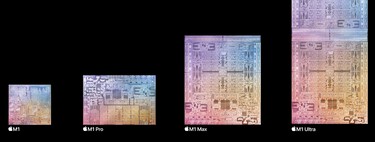We have all offered this advice at one time or another. Or we have received it. In fact, it is such a hackneyed phrase that little by little it has been losing its reason for being until it is relegated to a simple myth for many users. But is not. It is not at all. Sometimes restarting a computer, a smartphone or a tablets enough for solve some problems.
Of course, there is no magic here. It may seem that way to people who don’t know how an operating system works (a common user doesn’t have to know), but in reality there are technical basics that explain why turning off and on again any electronic equipment whose architecture is similar to the of a computer can effectively solve some problems.
An early restart can save us headaches
Before moving forward it is important that we moderate our enthusiasm. And it is that a reboot is not foolproof. Computer equipment can experience many problems that simply turning it off and on will not solve. Faults that are caused by a malfunction of some hardware component will not magically disappear by restarting our device, naturally.
However, there is a wide range of errors that originate in software, and, unlike those that affect hardware, they can be corrected thanks to the impact that a restart has on the behavior of the computer. In fact, these are the errors that, many times without being really aware of it, we users face more frequently. Fortunately. And a good part of them have their origin in the operating system, a software component that acts as an intermediary between us and the hardware of our device.
“The operating system itself does not perform a useful function; it simply creates the environment in which other programs can do useful work”
This is one of the formal definitions of operating system proposed by James L. Peterson and Abraham Silberschatz, the authors of ‘Operating Systems. Fundamental concepts’, one of the classic books used in many computer science faculties and schools to instruct their students in basic design principles of this fundamental component of our computers:
“An operating system is similar to a government. The basic resources of a computer system are hardware, software, and data. The operating system provides the means for the proper use of these resources during the operation of the computer system. Like a government, the operating system itself does not perform a useful function; it just creates the environment in which other programs can do useful work.”
This definition by Peterson and Silberschatz puts several keys on the table that we are interested in not overlooking, but before continuing we need to make one more point: when we turn on a PC, a smartphone or any other device with an architecture similar to that of a computer, the fundamental components of the operating system that are necessary for the computer to function properly are loaded into main memory from the secondary storage subsystem.
Main memory is volatile, so when you turn off the computer, its contents are lost. And when you turn it on, as we have just seen, the essential components of the operating system and the applications that we are running are stored in it. The original operating systems were born in the 1950s with the first computers, and all the time that has passed since then has allowed them to become more and more sophisticated, but also more complex.
As Peterson and Silberschatz explain, one of its most important functions is to manage hardware resources so that they can be used by the applications and shared between all those that are running concurrently. The problem is that scenarios frequently occur that prevent the algorithms used by the operating system to manage main memory, CPU usage, input/output or the file system, among other components, from performing correctly.
Sometimes a perfect storm is triggered consisting of a series of small failures that cascade and prevent everything from working properly.
Usually the operating system is capable of identifying these errors and correcting them without us noticing, but sometimes a perfect storm is triggered consisting of a series of small errors that cascade and prevent everything from working correctly. This is the scenario that users usually perceive as an excessive slowdown of our computer, or even in the form of error messages or unexpected crashes.
The good news is that making a clean slate in these circumstances is a piece of cake. The only thing we have to do is simply restart our device. In this way, as we have seen, the main memory will lose its content and during boot the fundamental components of the operating system will be reloaded into the main memory. as if nothing had happened.
A little advice to conclude and put into practice the ideas we have just investigated: it is advisable to restart our devices from time to time, and often the ones that thank us the most are our mobile phones because some users keep them on. for very long periods of time. And in these circumstances it is likely that little by little the content of the main memory will degrade. Fortunately, the solution is very simple.
Image: Elisa Venture
George is Digismak’s reported cum editor with 13 years of experience in Journalism

